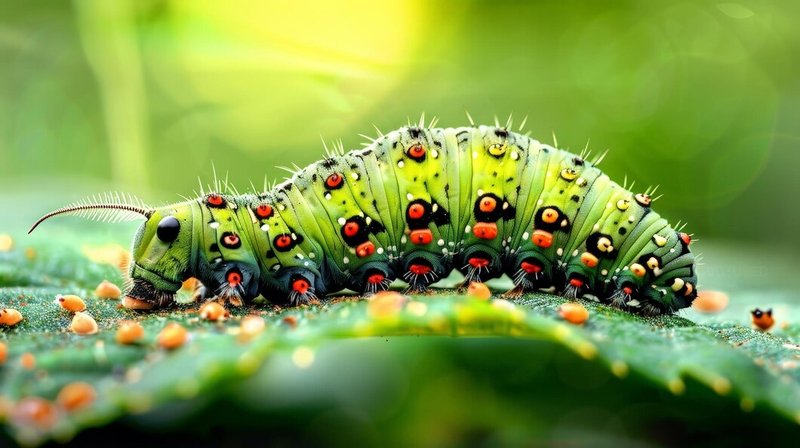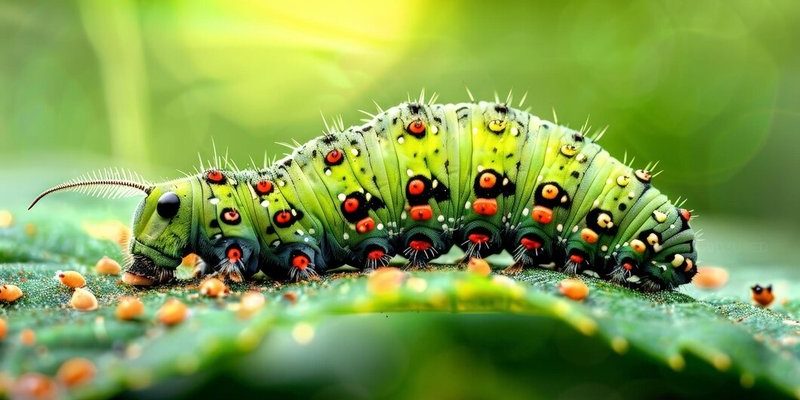
Let’s dive into the world of botflies, their larvae, and the unexpected roles they play in ecosystems. Botflies are fascinating creatures, and while they may prompt some shivers, their lifecycle and ecological functions reveal a deep connection to their surroundings. So, grab your favorite drink and let’s unravel the mysteries of these unusual insects together!
Understanding Botfly Larvae
Botflies belong to the family *Oestridae*, and their larvae are known for their unique development within the bodies of mammals. Specifically, they are known for infesting hosts, such as rabbits, deer, and even humans. This parasitic behavior can sound horrifying, but it serves a purpose in nature. The larvae develop while attached to their host, obtaining nutrients until they are fully matured, after which they drop to the ground to continue their life cycle.
You might wonder how such a gruesome beginning can have any positive implications. Here’s the thing: while the larvae feed off their host, this relationship can also create a dynamic that impacts the health of prey populations. For instance, removing sick or weak individuals from a population can help maintain the balance of the ecosystem, allowing healthier animals to thrive.
The Lifecycle of Botflies
The lifecycle of botflies may seem complicated, but it’s quite fascinating. It starts when a female botfly lays her eggs on a host. When the host comes into contact with the eggs, usually through scratching or grooming, the larvae burrow into the skin. As they develop, they create a small opening, allowing for air exchange, which is quite resourceful given their circumstances.
Once the larvae have matured, they drop off their host and enter the soil, where they transform into pupae. This stage is critical for their success in the environment. During this time, they undergo metamorphosis, emerging as adult flies ready to carry on the cycle. As strange as it may sound, this lifecycle plays an integral role in controlling the populations of certain animals, indirectly supporting the food web.
Botflies and Their Host Species
Botfly larvae have a profound impact on their host species, which can lead to various ecological repercussions. For instance, some of the most common hosts, like rodents and rabbits, may experience stress due to infestation. Generally, this leads to a natural selection process. Over time, healthier individuals may be better equipped to fend off larvae, meaning they pass on their genes, leading to a more resilient population.
Interestingly, botflies are also more specific than other parasites, often targeting particular host species. This specificity creates a unique balance in the ecosystem, allowing diverse wildlife to coexist without overwhelming any single species. Think of it this way: botflies act like nature’s adjusters, keeping populations in check and creating space for new growth.
Impact on Biodiversity
Biodiversity is vital for healthy ecosystems, and botfly larvae contribute to this in surprising ways. By regulating host populations, these larvae can help maintain species diversity. If a specific host becomes too numerous, their resources can become depleted, leading to a crash in their population. Botflies thus play a role in the larger picture of species interactions.
In some regions, studies have shown that the presence of botfly larvae can encourage the survival of various other insect species. For example, by limiting host populations, botflies allow other insects to thrive and establish themselves in the ecosystem. This ultimately creates a more complex web of life, where interactions are diverse and multifaceted.
Research Studies Highlighting Ecosystem Roles
A number of research studies have focused on the roles of botfly larvae within ecosystems. For instance, a study in the Brazilian Amazon revealed that areas with higher botfly populations saw increased host species diversity. The researchers noted that this was largely due to the natural regulatory effect that botfly infestations had on prey populations.
Furthermore, studies have also examined how host stress responses to botfly larvae can spur adaptive behaviors in wildlife. Animals infested with botflies often exhibit altered foraging behaviors to mitigate their risk exposure. By understanding these dynamics, ecologists can gain valuable insights into the health of various ecosystems.
Contrasting Ecosystem Roles: Parasites vs. Mutualists
When discussing roles within ecosystems, it’s essential to contrast parasites like botflies with mutualistic species. While parasites often benefit at the host’s expense, mutualists create relationships that support both parties, like bees and flowers. This leads to an interesting discussion about the balance of relationships in nature.
If we consider botflies as parasites, it’s easy to view them negatively. However, recognizing their role in maintaining balance and promoting biodiversity sheds light on the complexity of ecological relationships. In the grand scheme of things, both parasites and mutualists contribute to the sustainability of ecosystems, albeit in very different ways.
Looking Ahead: The Future of Botfly Research
As we delve deeper into ecology, the future of botfly research looks promising. As scientists continue to investigate their roles within ecosystems, we can expect to uncover even more surprising relationships. For instance, understanding how climate change might affect botfly distribution could reveal consequences for affected ecosystems.
Moreover, these larvae could serve as indicators of environmental health. If botfly populations fluctuate due to changing ecosystems, it might signal larger issues at play. The more we know about these fascinating creatures, the better equipped we’ll be to appreciate their importance in the web of life.
In conclusion, while botfly larvae might seem unpleasant at first glance, their roles in ecosystems are undeniably significant. They regulate populations, contribute to biodiversity, and provide insights into ecological health. Next time you hear about these tiny parasites, remember the larger picture—the intricate dance of life that includes even the most unexpected participants. Life is full of surprises, and botflies are a testament to that!

